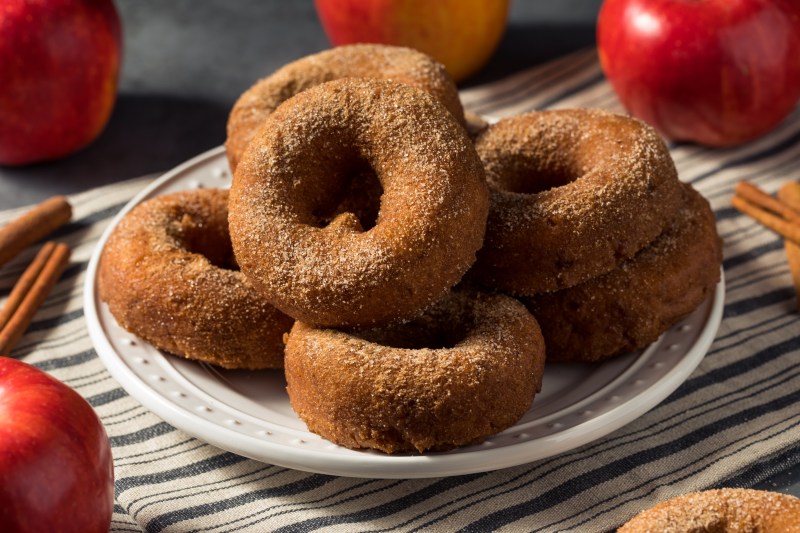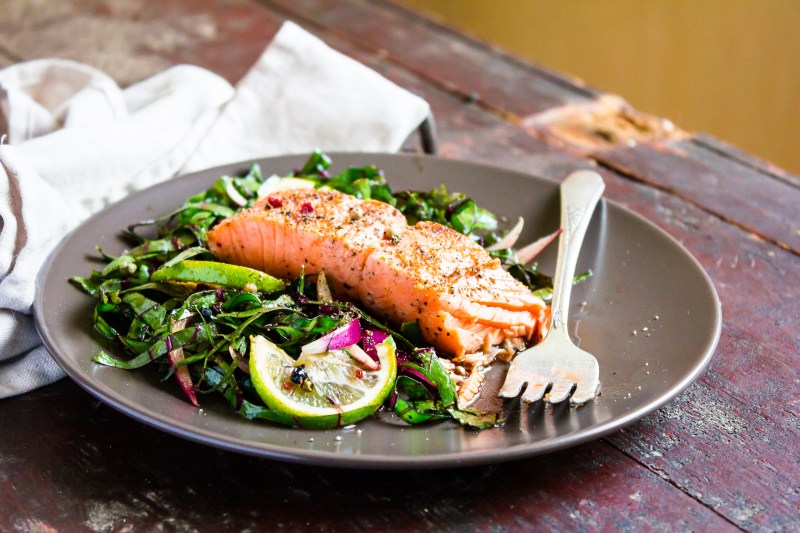We all know that sugar is unhealthy, and diets high in simple sugars are associated with an increased risk of certain lifestyle diseases such as obesity, insulin resistance, and type two diabetes. Sugar is pervasive in most processed foods, so unless you’re only eating natural foods, you’re probably consuming quite a bit of sugar in all of its various forms.
According to the Centers of Disease Control and Prevention (CDC), the average person in the United States consumes 17 teaspoons of added sugar per day, yet the Dietary Guidelines for Americans 2020–2025 recommends limiting the intake of added sugars to less than 10% of your total daily calories. For a 2,000-calorie diet, this would entail eating no more than 200 calories from added sugars, which is equal to about 12 teaspoons.
Many people struggle to reduce their sugar intake because they experience intense sugar cravings and turn to sweet foods to give them an energy boost or emotional pick-me-up. Fighting your sugar cravings can be difficult, particularly when you’re stressed, tired, overworked, or feeling down. To learn more about how sugar cravings work and to get tips on how to reduce sugar cravings, we spoke with Brenda Peralta, RD, a registered dietitian, health coach, and sports nutritionist.

Why do you have sugar cravings?
If you crave your afternoon soda, struggle to stop at just one piece of chocolate, or even get a headache or feel irritable if you don’t eat something sweet in the morning, you’re not alone. Not only are sugar cravings common, but this compulsion to eat sugar is indeed real and physiologically motivated. “So why do I crave sugar?” you might be asking yourself. Turns out that the answer is kind of complicated.
Studies show that sugar is an addictive substance, eliciting even more of a potent response in the reward centers of the brain than drugs like cocaine. Although these reward systems serve a biological survival role, they also can contribute to the addictiveness of a behavior, motivating you to seek out sweet food.
Every type of food activates the reward centers of the brain to some degree; otherwise, the species would not be motivated to seek more food, and our survival would be at risk. According to research studies, sweet foods are especially triggering because they elicit a more dramatic increase in dopamine, a neurotransmitter associated with pleasure, and endogenous opioids, which are natural pain relievers that also add to feelings of a natural high or pleasure. These chemicals cause an emotional rush that can trigger future sugar cravings in order to replicate the feeling.
Finally, as with substances like caffeine and alcohol, evidence suggests that the brain can develop a tolerance to sugar, requiring you to eat even more sugar to replicate the same level of emotional pleasure.
Peralta says craving sweets typically result from unstable sugar levels. After eating something high in simple carbohydrates, such as pastries, cookies, and refined grains, your blood glucose (sugar) level rises dramatically and quickly, causing the pancreas to secrete insulin to help your cells take up and use the glucose.
“Insulin is so efficient that it decreases the sugar response very quickly. It can even decrease it too much — this is often called a sugar crash,” she explains. “Due to this energy crash, your body now needs immediate energy, and what can provide you fast energy? Simple carbs. Now it is a vicious cycle of energy and cravings.”
What foods reduce sugar cravings?
Peralta explains that eating simple carbohydrates (sugar), such as foods like cookies, cakes, pastries, white bread, and white pasta, can lead to more sugar cravings.
“Whole-grains and complex carbohydrates, which are higher in fiber, release glucose more slowly, so you get more stable glucose levels instead of having sugar spikes. Also, fiber takes longer to digest in the body, which leads to a higher feeling of fullness,” she explains. “Proteins and fats have the same effect. They take longer to digest, so they increase your fullness levels, reducing your cravings.”
In other words, sugar fans the flame of sugar cravings. The more sugar you eat, the more sugar you will crave. Focusing on whole, natural, unprocessed foods such as lean proteins, vegetables, whole grains, eggs, seeds, nuts, and low-fat dairy will reduce sugar cravings.
Fruit is high in natural sugar, so depending on how sensitive you are to sugar cravings, you might be able to use fruit to help satisfy your cravings, but you may find that you do best avoiding most fruits.
What to do if you have sugar cravings
If you have a sugar craving, is it best to indulge in it and have something sweet to satisfy the craving, or is it better to use as much willpower as you can muster and avoid eating something sweet?
According to Peralta, it depends. First, you should try to determine why you have a craving.
“Sometimes, it is linked to a feeling. For example, some people crave when bored, stressed, or anxious,” she says. “If this is the case, don’t rely on food to make you feel better. Opt for exercise, yoga, meditation, and aromatherapy to manage stress.”
She says when there is no emotion linked to the craving and it does seem more physiological than emotional or behavioral, you can first try drinking warm lemon water to decrease the cravings and then consider a more satiating, but low-sugar snack.
Tips to help stop sugar cravings
Peralta’s top tip for reducing sugar cravings is to eat your foods in a specific, strategic order. “If you are going to eat something sweet, make sure to consume protein, vegetables, and fat first. This creates a buffer to avoid your sugar levels from spiking,” she explains.
She says that consuming apple cider vinegar can also sometimes take the edge off of sugar cravings. Dilute one tablespoon apple cider vinegar in water and drink it 15 to 20 minutes before your meal.
Finally, Peralta says sugar detoxes can be surprisingly effective for stopping sugar cravings. “I recommend avoiding all added sugars, opting for natural foods, and avoiding sugar sweeteners,” she advises. “While this might sound challenging, it can help reduce sugar cravings.”
Depending on your sugar addiction or reliance on sugar, a sugar detox may take anywhere from a couple of days to a couple of weeks. Some people do better paring back slowly. Play around and see what works for you. Even small steps are steps toward better health.






